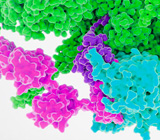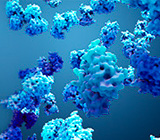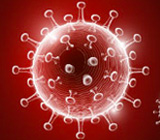-
REAGENT SERVICES
Hot!
-
Most Popular Services
-
Molecular Biology
-
Recombinant Antibody/Protein
-
Reagent Antibody
-
CRISPR Gene Editing
-
DNA Mutant Library
-
IVT RNA and LNP Formulations
-
Oligo Synthesis
-
Peptides
-
Cell Engineering
-
- CRISPR/Cas9 sgRNA
- CRISPR/Cas12a crRNA
- Prime Editing Guide RNA
- Base Editing Guide RNA
- HDR Templates
- gRNA + HDR Template Design Tools
- cGMP Guide RNA
- cGMP HDR Templates
- CRISPR/Cas Proteins
- CAR-T Knock-in Optimization Kit
- CRISPR Plasmids
- CRISPR gRNA Plasmid Libraries
- CRISPR Cell Lines
- Microbial Genome Editing
-
-
PRODUCTS
-
Most Popular Reagents
-
 Instruments
Instruments
-
Antibodies
-
ELISA Kits
-
Protein Electrophoresis and Blotting
-
Protein and Antibody Purification
-
Recombinant Proteins
-
Molecular Biology
-
Stable Cell Lines
-
Cell Isolation and Activation
-
 IVD Raw Materials
IVD Raw Materials
-
 Therapy Applications
Therapy Applications
-
Resources
-
- Pharmacokinetics and Immunogenecity ELISA Kits
- Viral Titration QC ELISA Kits
- -- Lentivirus Titer p24 ELISA KitHot!
- -- MuLV Titer p30 ELISA KitNew!
- -- AAV2 and AAVX Titer Capsid ELISA Kits
- Impurity Test ELISA Kits
- -- BSA ELISA Kit, 2G
- -- Cas9 ELISA KitNew!
- -- Protein A ELISA KitNew!
- -- His tagged protein detection & purification
- -- dsRNA ELISA Kit
- -- Endonuclease ELISA Kit
- COVID-19 Detection cPass™ Technology Kits
-
- Automated Maxi-Plasmid PurificationHot!
- Automated Mini-Plasmid PurificationNew!
- PCR Reagents
- S.marcescens Nuclease Benz-Neburase™
- DNA Assembly GenBuilder™
- Cas9 / Cas12a / Cas13a Nucleases
- Base and Prime Editing Nucleases
- GMP Cas9 Nucleases
- CRISPR sgRNA Synthesis
- HDR Knock-in Template
- CRISPR Gene Editing Kits and Antibodies
-
![AmMag™ Quatro Automated Plasmid Purification]() AmMag™ Quatro automated plasmid purification
AmMag™ Quatro automated plasmid purification
-
![Anti-Camelid VHH]() MonoRab™ Anti-VHH Antibodies
MonoRab™ Anti-VHH Antibodies
-
![ELISA Kits]() ELISA Kits
ELISA Kits
-
![Precast Gels]() SurePAGE™ Precast Gels
SurePAGE™ Precast Gels
-
![Quatro ProAb Automated Protein and Antibody Purification System]() AmMag™ Quatro ProAb Automated Protein and Antibody Purification System
AmMag™ Quatro ProAb Automated Protein and Antibody Purification System
-
![Target Proteins]() Target Proteins
Target Proteins
-
![AmMag™ Quatro Automated Plasmid Purification]() AmMag™ Quatro automated plasmid purification
AmMag™ Quatro automated plasmid purification
-
![Stable Cell Lines]() Stable Cell Lines
Stable Cell Lines
-
![Cell Isolation and Activation]() Cell Isolation and Activation
Cell Isolation and Activation
-
 IVD Raw Materials
IVD Raw Materials
-
![Quick
Order]() Quick Order
Quick Order
-
![Quick
Order]() Quick Order
Quick Order
- APPLICATIONS
- RESOURCES
- ABOUT US
- SIGN IN My Account SIGN OUT
- REGISTER

![Amino Acid Code Amino Acid Code]()
Biology Terms Dictionary
This Biology terms dictionary provides query services for biology and biochemistry terms. Please enter the biology or biochemistry terms you want to search.
List by Alphabet: A B C D E F G H I J K L M N O P Q R S T U V W X Y Z
Recombinant Antibody
Introduction
A recombinant antibody is a genetically engineered antibody produced using recombinant DNA technology. Compared to conventional monoclonal antibodies, recombinant antibodies provide greater versatility, including the ability to modify antibody structures to improve function, stability, or specificity. They are widely used in research, diagnostics, and therapeutics, especially in cancer immunotherapy, autoimmune diseases, and viral infections.
Mechanisms of Recombinant Antibody Production
1. Gene Cloning and Vector Construction
The production process starts with the isolation of genes encoding the variable regions (V_H and V_L domains) from B cells or hybridomas. These genes are cloned into expression vectors, which contain:
• Promoters (e.g., CMV for mammalian systems) to drive transcription.
• Antibiotic markers (e.g., puromycin resistance) for selecting transfected cells.
• Affinity tags (e.g., His-tag) for protein purification.
Codon optimization is often performed to enhance expression efficiency in specific host cells.
2. Expression Systems
The selection of an expression system depends on the required yield, scalability, and need for post-translational modifications:
• Mammalian systems (CHO, HEK293): Preferred for therapeutic antibodies, offering human-like glycosylation.
• Bacterial systems (E. coli): Suitable for rapid production of antibody fragments (e.g., scFv, Fab) but lacks glycosylation capabilities.
• Yeast systems (Pichia pastoris): Provide higher yields than bacterial systems and some PTMs.
• Insect systems (Baculovirus): Used to produce complex proteins requiring PTMs similar to mammalian cells.
3. Antibody Screening and Selection
Large libraries of antibody fragments are screened to identify high-affinity candidates.
• Phage display is the most common method, where bacteriophages display antibody fragments on their surface and undergo multiple rounds of binding and selection.
• Yeast display and ribosome display are alternatives, offering different advantages in screening throughput and stability.
Engineering of Recombinant Antibodies
This section describes how recombinant antibodies can be modified and optimized for specific applications. Engineering strategies allow for improvements in binding affinity, stability, half-life, and therapeutic function. Below are key areas of antibody engineering:
1. Humanization
Mouse-derived antibodies can trigger immune responses when used in humans. Humanization involves replacing non-human sequences with human antibody sequences to reduce immunogenicity while retaining binding specificity. This technique is essential for therapeutic antibodies.
2. Bispecific Antibodies
Bispecific antibodies bind to two different antigens simultaneously, enhancing their therapeutic potential. For example, bispecific T-cell engagers (BiTEs) redirect immune cells to attack cancer cells by binding both a tumor antigen and a T-cell receptor (CD3).
3. Antibody-Drug Conjugates (ADCs)
ADCs are antibodies linked to cytotoxic drugs, enabling targeted drug delivery. Once the antibody binds to the target antigen on diseased cells, the cytotoxic drug is released, minimizing off-target effects.
4. Fc Region Engineering
The Fc region (constant fragment) of antibodies can be engineered to enhance immune system activation, extend circulation half-life, or reduce effector function for specific therapeutic needs.
5. Antibody Fragments (scFv, Fab) and Multivalent Antibodies
Engineering smaller antibody fragments, such as single-chain variable fragments (scFv) or fragment antigen-binding (Fab) units, provides greater tissue penetration and rapid clearance. Multivalent antibodies with multiple antigen-binding sites can increase avidity for their targets, improving therapeutic efficacy.
Types of Recombinant Antibodies
• Full-Length Monoclonal Antibodies: Composed of both heavy and light chains, these mimic natural antibodies and are widely used in therapy.
• Antibody Fragments (scFv, Fab): Smaller fragments retain antigen-binding abilities and are used for diagnostics, imaging, and research.
• Bispecific Antibodies: Capable of binding two distinct antigens, they are used in cancer therapy and immune modulation.
• Bispecific Antibodies: Capable of binding two distinct antigens, they are used in cancer therapy and immune modulation.
• Antibody-Drug Conjugates (ADCs): Deliver cytotoxic drugs directly to diseased cells, minimizing side effects.
Industrial Applications
1. Therapeutic Applications
• Cancer Immunotherapy: Antibodies targeting immune checkpoints (e.g., PD-1, PD-L1) are used to treat cancer.
• Autoimmune Diseases: Recombinant antibodies against TNF-α (e.g., infliximab) treat rheumatoid arthritis and Crohn’s disease.
• Infectious Diseases: Antibodies are developed for viruses such as SARS-CoV-2, HIV, and Ebola.
2. Diagnostic Applications
ELISA Kits and Biosensors: Antibody fragments (e.g., scFv) detect biomarkers with high sensitivity.
• Imaging Agents: Conjugating antibodies with imaging molecules enables non-invasive visualization (e.g., PET and SPECT imaging).
3. Research Tools
• Protein Purification: Immobilized antibodies are used to purify target proteins via affinity chromatography.
•Intracellular Imaging: Antibody fragments called chromobodies allow the tracking of proteins in living cells.
GenScript Services and Solutions
GenScript offers a full suite of services to accelerate the development and production of recombinant antibodies:
• Phage Display Services: From library generation to screening, GenScript supports the rapid identification of high-affinity binders.
• Recombinant Protein Expression Service: GenScript delivers high-yield and high-purity products in a flexible, cost-effective manner in the least amount of time.
• Expression and Purification Services: High-quality antibody production in bacterial and mammalian systems is followed by advanced purification techniques.
Challenges and Future Directions
1. Challenges
• Production Costs: Mammalian expression systems, though ideal for therapeutic use, are costly and time-consuming.
• Glycosylation Variability: Consistent glycosylation patterns are essential for efficacy and require careful control.
• Regulatory Compliance: Ensuring safety and efficacy involves stringent regulatory requirements, slowing development.
2. Future Directions
• AI-Assisted Antibody Design: Artificial intelligence is being used to predict optimal sequences and improve binding affinity.
• Genome-Edited Cell Lines: CRISPR-based editing can enhance antibody expression and reduce production time.
• Continuous Bioprocessing: Emerging technologies in continuous manufacturing aim to improve production efficiency and reduce costs.
Conclusion
Recombinant antibodies have transformed modern medicine, providing highly specific tools for research, diagnostics, and therapeutics. Advances in antibody engineering have enabled the development of humanized, bispecific, and ADC antibodies, driving innovation in cancer treatment and autoimmune therapies. As biotechnology continues to evolve, with tools like AI and CRISPR enhancing development, recombinant antibodies will remain at the forefront of therapeutic innovation.
- Tags:
- Protein
Related Biology Tools
-
GenSmart™ Codon Optimization
GenSmart Optimization is a free online tool for performing codon optimization to improve gene expression. GenScript's patented algorithms are integrated into the tool to optimize the computing capability of high-performance sequence generation.
-
DNA Construct Design Tool
GenSmart™ Design is a free online DNA construct design tool developed by GenScript. GenSmart™ Design has two design modules, the Create Construct module for individual plasmid design and the Create Library module for DNA library design.
-
Codon Frequency Tables
This online tool shows commonly used genetic codon frequency table in expression host organisms including Escherichia coli and other common host organisms.
Service and Products

Protein Expression
GenScript recombinant protein and rAb services provide high quality recombinant proteins and rAbs for a variety of downstream research applications.

Bacterial Expression
One-stop service from Sequence to Protein starting from $1600, 4 weeks.

Insect Expression
GenScript's BacuVance baculovirus expression system was developed by our in-house team of scientists for virus production and expression of recombinant proteins from baculovirus-infected insect cells.

Mammalian Transient Expression
Proprietary High Density (HD) expression system, enhance the protein yield up to 100 fold, achieve antibody titers up to 3 g/L.

Reagents for COVID-19 Research
Gram level, ready to ship RBD proteins, ACE2 assay cell lines and pseudovirus.
-
Top Search
-
Hot Glossary
-
Antibody
If you know of any terms that have been omitted from this glossary that you feel would be useful to include, please send detail to the Editorial Office at GenScript: website@genscript.com
If your term is adopted, we will send 1,000 EzCoupon points to your GenScript account.
-





































